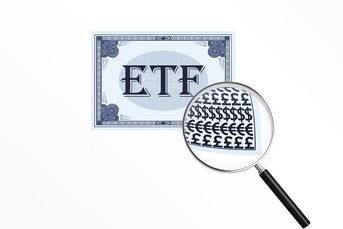Why the Fed won’t raise rates this year

Regardless of what Friday's April jobs report suggests, the economy may not be strong enough to support higher rates.
The Federal Reserve is not going to raise rates in 2015. A bold statement perhaps, but that’s the view of DoubleLine Capital, which manages $73 billion in fixed income funds.
Investor eyes are keenly focused on the April monthly employment report, due out this Friday, in the latest attempt to gain clarity when the data-dependent Federal Reserve will move to raise the Fed Funds rate. However, Bonnie Baha, head of global developed credit for DoubleLine and a member of the firm’s Fixed Income Asset Allocation committee, told S&P Capital IQ Wednesday that DoubleLine thinks the U.S. economy is not strong enough to support higher rates.
Ms. Baha is co-manager of DoubleLine Floating Rate Fund (DLFRX) and DoubleLine Low Duration Bond Fund (DLSNX). She is also part of the team that supports the recently launched and actively managed SPDR DoubleLine Total Return ETF (TOTL). All three of these funds have an average duration below that of the Barclays Aggregate Index, but sport relatively high yields compared to peers, aided by taking on some credit risk.
Supporting the view on rates, she highlighted the fractional first quarter 2015 0.2% gross domestic product, the still low-inflation rate that remains below the Fed’s target and is likely to be negatively impacted by rebounding energy prices, and employment as a percentage of the U.S. population that remains at 1997 level, but with a lower quality.
While the U.S. economy should improve somewhat in the remainder of 2015, Ms. Baha thinks investors are preparing too early for Fed action. She believes the 30 basis point increase in the 10-year Treasury yield in the past two weeks to 2.20% stems from technical trading reasons as fundamentally nothing has changed.
DoubleLine’s view on the timing of Fed action is different than many, including Standard and Poor’s Global Economics, which expects the initial Fed funds hike will occur in September.
Indeed, DoubleLine believes that based on expected GDP growth, the 10-year yield should be closer to 1.75%. Such a decrease in bond yields and simultaneous increase in bond prices, if it were to materialize, would also be positive for shareholders of high dividend yielding stocks in the consumer staples and utilities sectors.
S&P Capital IQ believes these sectors have underperformed the broader S&P 500 Index this year as investors have rotated out of these stable “bond proxies” in anticipation of higher bond yields. Consumer staples and utilities stocks in the S&P 500 Index sport an average dividend yield of 2.7% and 3.7%, respectively.
Todd Rosenbluth is director of ETF & Mutual Fund Research at S&P Capital IQ Global Markets Intelligence. Follow him @ToddSPCAPIQ.
Learn more about reprints and licensing for this article.






